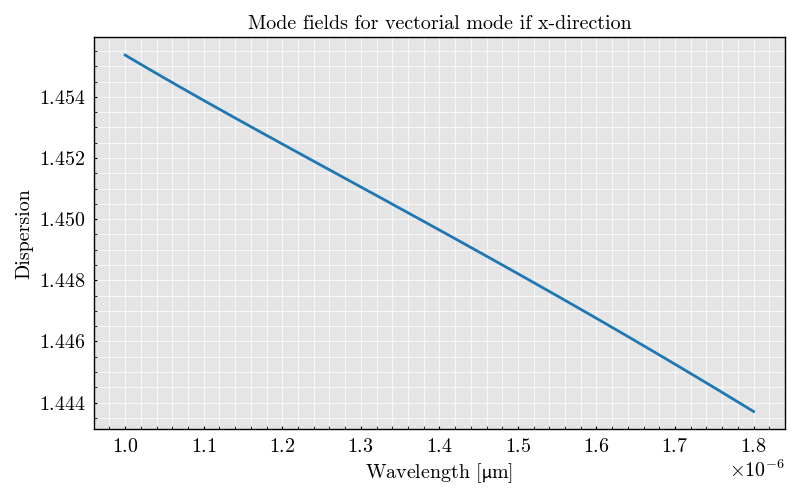Note
Go to the end to download the full example code
Modal dispersion VS core index#
Imports#
import numpy
from PyFiberModes import LP01
from PyFiberModes.fiber import load_fiber
import matplotlib.pyplot as plt
Generating the fiber structures#
Here we create the different fiber design that we want to explore
wavelength_list = numpy.linspace(1000e-9, 1800e-9, 100)
data = []
for wavelegnth in wavelength_list:
smf28 = load_fiber(fiber_name='SMF28', wavelength=wavelegnth)
dispersion = smf28.get_effective_index(mode=LP01)
data.append(dispersion)
figure, ax = plt.subplots(1, 1)
ax.set(
title='Mode fields for vectorial mode if x-direction',
xlabel=r'Wavelength [$\mu m$]',
ylabel='Dispersion',
)
ax.plot(wavelength_list, data)
plt.show()
# -

Total running time of the script: (0 minutes 0.605 seconds)